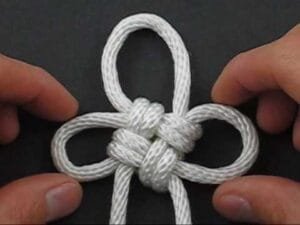Table of Contents
Mastering the Cross Knot for Bondage: A Secure and Stylish Alternative
Introduction
The cross knot is a versatile and secure option for those involved in the art of bondage. Known for its nonslip properties, it serves as a reliable alternative to the traditional square knot. It is especially popular for tying harnesses and crafting intricate designs such as the tortoise shell bodysuit.
Step-by-Step Guide to Tying a Cross Knot
1. **Start with Two Ropes**: Begin by holding two ropes, each in one hand, crossing them diagonally over each other.
2. **Create an Over-Under Loop**: Take the rope in the left hand and loop it over and then under the rope in the right hand.
3. **Make the Second Loop**: Now, take the rope in your right hand and loop it under and then over the rope in the left hand.
4. **Tighten Securely**: Pull both ropes simultaneously to tighten the knot, ensuring it’s firm and doesn’t slip.
Why Choose It?
The cross knot offers several advantages in bondage scenarios. Firstly, its nonslip nature helps maintain tension, preventing accidental loosening. Secondly, the cross knot can be adjusted easily, making it ideal for creating various bondage patterns like harnesses and the tortoise shell bodysuit. Lastly, its aesthetic appeal adds a touch of elegance to your designs.
Applications in Bondage Design
This knot is favored in constructing intricate designs such as the tortoise shell bodysuit, where stability and durability are paramount. Its secure grip ensures that intricate patterns hold their shape, providing both functionality and aesthetic appeal. Additionally, the cross knot can be seamlessly integrated into harnesses, offering comfort and reliability during use.
Looking for a good book on bondage I recommend Two Knotty Boys Showing You the Ropes: A Step-by-Step, Illustrated Guide for Tying Sensual and Decorative Rope Bondage







